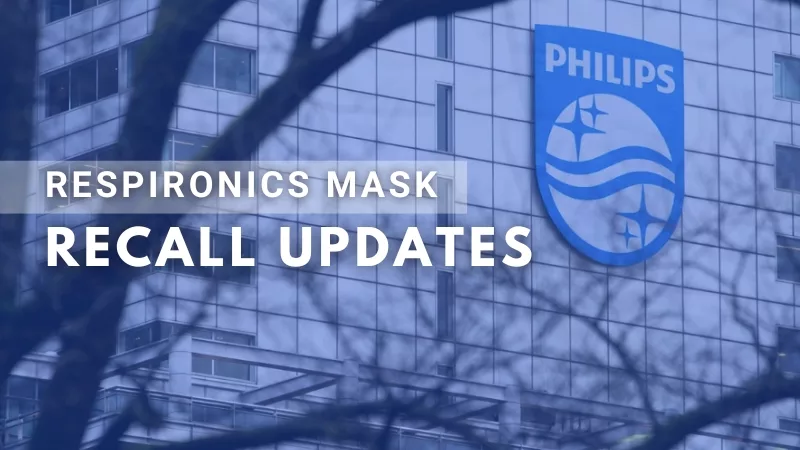(877) 799-0202
for insurance orders only
On September 6, 2022, Philips Respironics, on its press release, alerted its patients worldwide on revised instructions on their CPAP masks, that contain magnetic headgear clips or straps due to the potential risk of serious injury it may cause. Magnetic headgear clips are generally being used to attach and detach the CPAP masks headgear straps more easily.
The FDA issued a recall and safety notice that these masks could potentially cause injury or death. They also indicated that this announcement is considered a Class I “recall” as recalls may not be limited to ‘removal of the product from the field’ but also ‘the correction of product in the field’.
The FDA identified that the impacted mask includes Amara View Full Face Mas, Dream Wisp Nasal Mask, Dreamwear, Full Face Mask, Wisp and Youth Nasal Mask, and Therapy Mask 3100 NC/SP, with distribution dates from January 1, 2015 to September 9, 2022. You can check the affected masks and their serial and model numbers here
Philips Respironics stated that these masks with magnetic clips are ‘safe’ to use and patients may continue to use them according to the updated instructions and labeling if patients or people near them do not have implanted metallic medical devices or metallic objects in the body. They also added that the ‘voluntary notification’ aims to represent a new and industry-leading practice as these magnetic headgear clips are commonly used in the sleep therapy industry today. Philips Respironics firmly assert that this notification should not stop their customers from using their masks, but only if the implanted metallic medical device/metallic objects are contraindicated against their mask’s magnets. Here is the list:
Contraindication: Use of the mask is contraindicated for patients and their household members, caregivers, and bed partners that may be in close vicinity to patients using the masks that have implanted devices that may be affected by magnets, including but not limited to:
- Pacemakers
- Implantable cardioverter defibrillators (ICD)
- Neurostimulators
- Magnetic metallic implants/electrodes/valves placed in upper limbs, torso, or higher (i.e., neck and head)
- Cerebral spinal fluid (CSF) shunts (e.g., ventriculo peritoneal (VP) shunt)
- Aneurysm clips
- Embolic coils
- Intracranial aneurysm intravascular flow disruption devices</span
- Metallic cranial plates, screws, burr hole covers, and bone substitute devices
- Metallic splinters in the eye
- Ocular implants (e.g., glaucoma implants, retinal implants)
- Certain contact lenses with metal
- Implants to restore hearing or balance that have an implanted magnet (such as cochlear implants, conduction hearing devices, and auditory brainstem implants)/li>
- Magnetic denture attachments
- Metallic gastrointestinal clips
- Metallic stents (e.g., aneurysm, coronary, tracheobronchial, biliary)
- Implantable ports and pumps (e.g., insulin pumps)>
- Hypoglossal nerve stimulators
- Devices labeled as MR (Magnetic Resonance) unsafe
- Magnetic metallic implants not labeled for MR or not evaluated for safety in a magnetic field
*Source: https://philips.to/3CL19VH
As per Philips Respironics recommendation, if you believe that these mask magnets have a medical impact on you and would still like to continue to use your CPAP mask, it is best to consult your physician immediately to look for an alternative mask for your sleep therapy. If you have questions about your affected mask, please contact Philips Respironics customer service at 1-800-345-6443 for assistance.
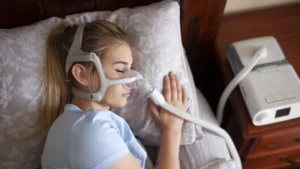
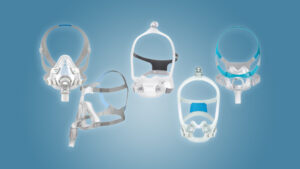
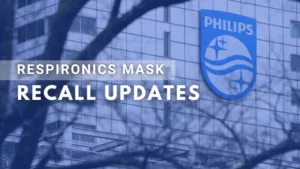
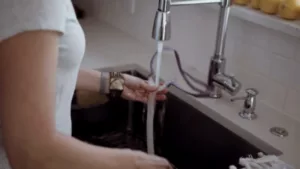
Maintaining your CPAP Supplies how to clean and when to replace
March 22, 2024
No Comments
Read More »
- Pacemakers
- Implantable cardioverter defibrillators (ICD)
- Neurostimulators
- Magnetic metallic implants/electrodes/valves placed in upper limbs, torso, or higher (i.e., neck and head)
- Cerebral spinal fluid (CSF) shunts (e.g., ventriculo peritoneal (VP) shunt)
- Aneurysm clips
- Embolic coils
- Intracranial aneurysm intravascular flow disruption devices</span
- Metallic cranial plates, screws, burr hole covers, and bone substitute devices
- Metallic splinters in the eye
- Ocular implants (e.g., glaucoma implants, retinal implants)
- Certain contact lenses with metal
- Implants to restore hearing or balance that have an implanted magnet (such as cochlear implants, implantedbone conduction hearing devices, and auditory brainstem implants)
- Magnetic denture attachments
- Metallic gastrointestinal clips
- Metallic stents (e.g., aneurysm, coronary, tracheobronchial, biliary)
- Implantable ports and pumps (e.g., insulin pumps)
- Hypoglossal nerve stimulators
- Devices labeled as MR (Magnetic Resonance) unsafe
- Magnetic metallic implants not labeled for MR or not evaluated for safety in a magnetic field


